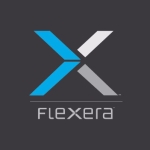What is our primary use case?
Primarily, we use Discovery to discover and maintain our CIs (Configuration Items). It also has the potential for subscription management, but we're not currently using it for that.
One of our key use cases is tracking laptops assigned to employees within our organization. We need to monitor their usage patterns and performance. We start by using Discovery to populate a database with details about computers, servers, and SNMPs.
Then, we integrate with a third-party tool for monitoring. If issues arise, they raise a ticket in ServiceNow, allowing us to proactively address problems.
ServiceNow offers many other features with Discovery, but it takes time to learn and implement them effectively. We've started with out-of-the-box solutions, customized them to our needs, and are gradually upgrading our processes.
So, it does take some time for someone to learn Discovery, or any other ServiceNow product.
I also primarily work with ITSM modules like incident, problem, and change management. I also use IT Operations Management (ITOM) products like Discovery, Service Mapping, and Operations Management.
We use Discovery and Operations Management to manage our CIs. Additionally, we use incident, problem, change, and knowledge management for ITSM (IT Service Management). It's like a ticketing service.
How has it helped my organization?
Discovery patterns have helped identify and map our services more accurately. Discovery connects all the CIs (Configuration Items) together.
In ServiceNow, there is something called a schema map that will show in which data center, what things are present, how many virtual agents are there, and how many people are working.
For example: Think of a scenario where my Wi-Fi in a specific area is not working – let's say Wi-Fi in D Block. Two employees from that block raise tickets saying that Wi-Fi is not working. Without a tool like Discovery, I don't know if the Wi-Fi access point is broken, if the service package has expired, or if there's a power issue.
So, I would check the subscription status of that Wi-Fi access point and send the support team there. They will resolve the issue. That way, everything is interconnected. Multiple people from the same router raising tickets means there is some problem with the router itself. That's how it helps.
What is most valuable?
The best thing about Discovery is maintaining all the CIs in one place.
I can sort the data, export it to Excel for manipulation, and build reports like how many computers or servers we have and their capacity.
ServiceNow also offers agentless Discovery, where we can see what software is installed on laptops.
We can even run commands to discover all the software on a PC. This helps us see if users are missing any of our essential tools and services. That's a great thing about Discovery.
What needs improvement?
The initial setup could be made easier. We hired professionals to implement it, and they trained our employees for ongoing processes.
The initial setup was done by experts, and then they prepared our team to handle common errors.
For how long have I used the solution?
I'm relatively new to it. I've been using it for about a year. Before that, my focus was on ticketing services.
In India, there's a higher demand for ticketing services within ServiceNow, so we don't get as many requirements for Discovery. With more clients using cloud services, we've started using Discovery in the last couple of years.
What do I think about the stability of the solution?
ServiceNow Discovery is very stable, but it depends on our infrastructure. Discovery uses a MID server, and if we allocate a good amount of resources, like 16GB of RAM and 500GB of space, it works well.
If you don't provide the minimum required resources, it can sometimes hang. But in our case, we had enough resources, so it ran smoothly.
It might take some time – for a complete discovery, it can take six to seven hours – but that's still better than some other services.
What do I think about the scalability of the solution?
We have a team of three to four people who monitor Discovery. We've set up a VPN for Discovery purposes, and all laptops are connected to it. We use usernames and passwords for the discovery process.
Employees use the devices, but they might not be aware that Discovery is running in the background.
Our monitoring team will check if anything goes wrong. Discovery will generate tickets, and then they'll investigate and ask the help desk to resolve any technical issues.
How are customer service and support?
The customer service and support people are pretty good. They will help you. If you have any problem, they'll provide a solution. That's a good thing about ServiceNow. But understand that they'll give you the solution, and you need to figure out how to implement it.
They suggested that we hire experts for the initial setup. ServiceNow has partner service providers listed on their website. You can hire someone from there for the initial configuration and then manage day-to-day tasks with your own support team. That's how we do it.
Which solution did I use previously and why did I switch?
Before this, we didn't have a proper software setup. We used a different system, but it had issues. Sometimes we had laptops in storage without knowing, or we would buy new laptops and assign them to new hires when there were existing ones available.
So the company was thinking of getting a new system. Since we were already using ServiceNow for ticketing services, we took a Discovery subscription and started using it.
How was the initial setup?
We have both configurations, cloud and on-premises. We use AWS Cloud.
What about the implementation team?
We hired professionals to implement it, and they trained our employees for ongoing processes.
ServiceNow have documentation, and it's good, but it can be difficult for a beginner to understand. If you're an expert, it's easier.
We discussed this with the experts, and they confirmed that the documentation covers common problems and solutions. However, it takes some effort to dive deep into them and resolve issues.
What was our ROI?
ROI (Return on Investment) is good. ServiceNow don't disclose the price publicly. They'll assess your organization's needs and then come up with a price.
What's my experience with pricing, setup cost, and licensing?
What other advice do I have?
My recommendation depends on the organization and how big it is. If it is a large organization with thousands of laptops and many servers to monitor, then I would suggest going with ServiceNow. However, ServiceNow is costly.
Overall, I would rate the solution an eight out of ten. It's a great tool, but there are two reasons for the slightly lower score.
- First, there's a significant investment necessary to utilize Discovery effectively.
- Second, it takes time to fully understand and leverage the tool.
In our case, the deployment took three months. We had an expert for three months who analyzed our system, developed a solution, and then implemented it. This process is necessary, but it did take a significant amount of time.
Which deployment model are you using for this solution?
Hybrid Cloud
If public cloud, private cloud, or hybrid cloud, which cloud provider do you use?
Amazon Web Services (AWS)
Disclosure: My company does not have a business relationship with this vendor other than being a customer.

























